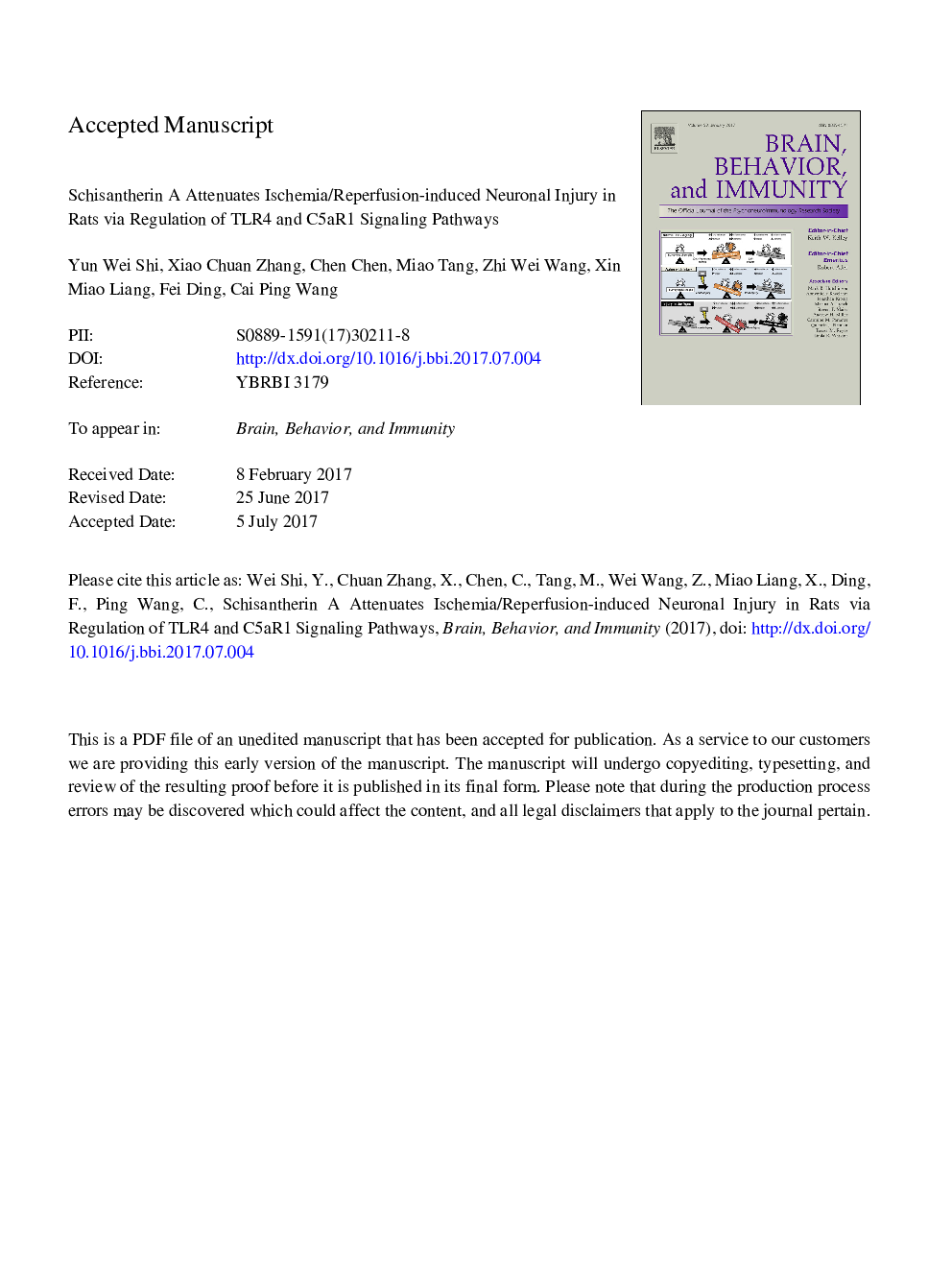| Article ID | Journal | Published Year | Pages | File Type |
|---|---|---|---|---|
| 7279818 | Brain, Behavior, and Immunity | 2017 | 46 Pages |
Abstract
Toll-like receptor 4 (TLR4) and C5aR1 (CD88) have been recognized as potential therapeutic targets for the reduction of inflammation and secondary damage and improvement of outcome after ischemia and reperfusion (I/R). The inflammatory responses which induce cell apoptosis and necrosis after I/R brain injury lead to a limited process of neural repair. To further comprehend how these targets function in I/R state, we investigated the pathological changes and TLR4 and C5aR1 signaling pathways in vitro and in vivo models of I/R brain injury in this study. Meanwhile, we explored the roles of schisantherin A on I/R brain injury, and whether it exerted neuroprotective effects by regulating the TLR4 and C5aR1 signaling pathways or not. The results showed that schisantherin A significantly reduced the neuronal apoptosis induced by oxygen and glucose deprivation and reperfusion (OGD/R) injury in primary culture of rat cortical neurons. Also, schisantherin A alleviated neurological deficits, reduced infarct volume, attenuated oxidation stress, inflammation and apoptosis in ischemic parietal cortex of rats after middle cerebral artery occlusion and reperfusion (MCAO/R) injury. Moreover, the activated TLR4 and C5aR1 signaling pathways were inhibited by schisantherin A treatment. In conclusion, TLR4 and C5aR1 played a vital role during I/R brain injury in rats, and schisantherin A exhibited neuroprotective effects by TLR4 and C5aR1 signaling pathways. These findings also provided new insights that would aid in elucidating the effect of schisantherin A against cerebral I/R and support the development of schisantherin A as a potential treatment for ischemic stroke.
Related Topics
Life Sciences
Immunology and Microbiology
Immunology
Authors
Yun Wei Shi, Xiao Chuan Zhang, Chen Chen, Miao Tang, Zhi Wei Wang, Xin Miao Liang, Fei Ding, Cai Ping Wang,
